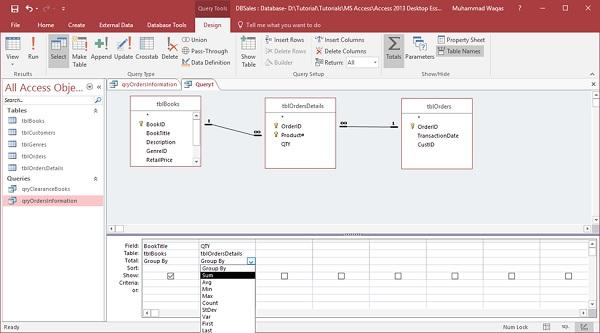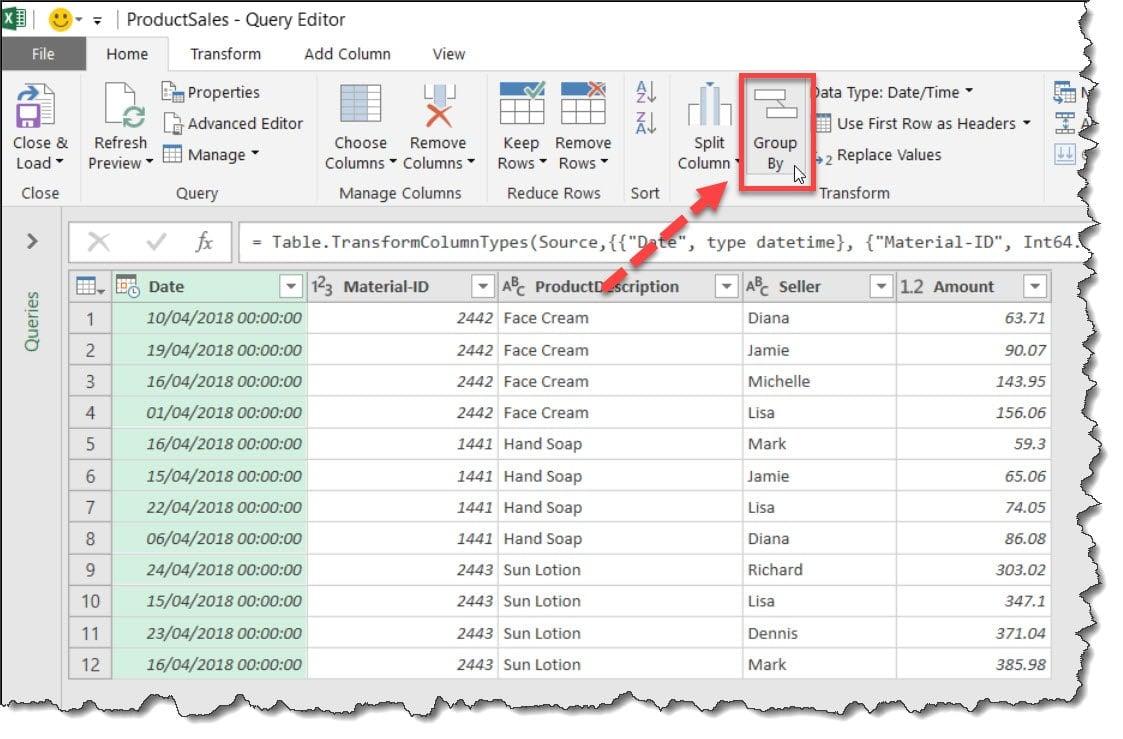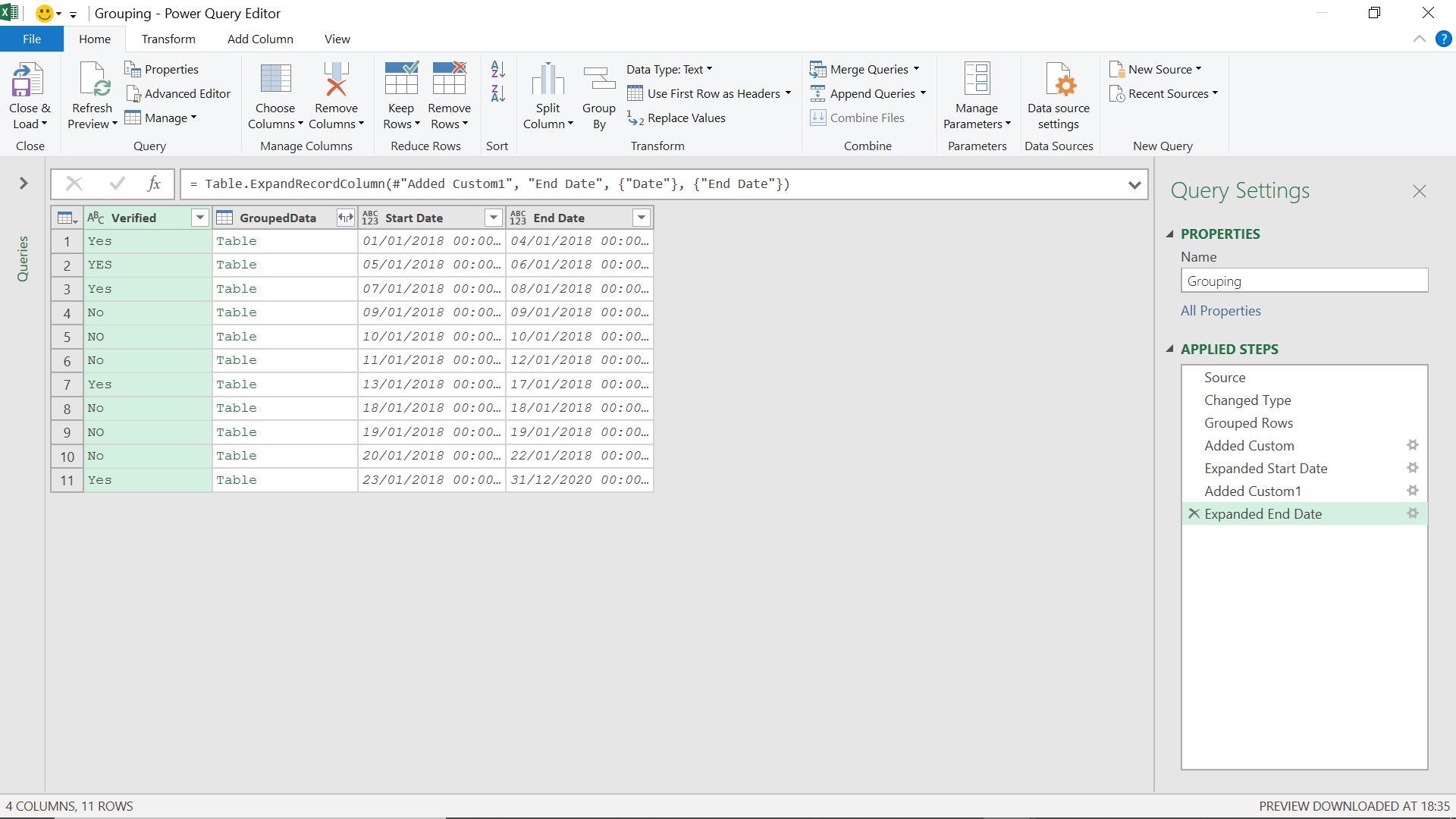Google launches Query Groups – an AI technology that groups keywords by search intent. This feature helps optimize SEO and advertising strategies by accurately categorizing keyword groups.
According to DPS.MEDIA, this solution is very important for SMEs, helping save time and improve digital marketing effectiveness. Actual statistics show that 70% of marketers will prioritize using AI tools for keyword analysis.
The importance of Query Groups in optimizing SEO strategies for SMEs
Understanding Query Groups and their role in SEO
Query Groups is an important step in leveraging AI to group keywords based on user search intent. With this feature, Google helps small and medium-sized businesses (SMEs) easily identify keyword groups with the same purpose, thereby building more accurate and effective content. According to research by DPS.MEDIA, keyword grouping helps increase content optimization effectiveness by 25% and improves search rankings.
Practical benefits for SMEs when applying Query Groups
With limited resources, SMEs need to focus on SEO strategies that deliver the highest value. Query Groups help businesses save time on keyword analysis and minimize duplicate content optimization. This means each keyword group is handled strategically, increasing organic traffic growth and enhancing conversion potential.
For example, a small e-commerce site can group keywords like ”cheap men's sports shoes” and “where to buy men's sports shoes” into a single group to create one article that is both natural and fully covers user intent.
SEO strategy optimization checklist using Query Groups for SMEs
- Analyze search intent data: Use AI tools to assist in grouping keywords by search intent.
- Build diverse content: Focus on the main topics within each group to ensure all user needs are covered.
- Prioritize potential keyword groups: Base your selection of strategic keyword groups on search volume and competition.
- Monitor and adjust: Continuously update SEO results based on the built keyword group to optimize performance.
| Criteria | Benefits | Practical application |
|---|---|---|
| Keyword group by intent | Increase accuracy in content development | Minimize duplicate content and enhance UX |
| Optimize resources | Save time and analysis costs | SMEs can easily apply with limited budgets |
| Increase traffic growth | Improve rankings and conversion rates | Align content direction with user needs |
Takeaway: To develop sustainable SEO, SMEs need to leverage AI technology to group keywords by search intent. This not only enhances content quality but also helps manage strategies more clearly and professionally—a direction DPS.MEDIA encourages for Vietnamese businesses.

How Google uses AI to group keywords by user search intent
Introduction to Query Groups and AI applications in keyword grouping
Google has recently launched the Query Groups feature, allowing the use of artificial intelligence (AI) to group keywords based on the real search intent of users. Instead of focusing only on individual keywords, AI will analyze context and behavior to group queries with the same purpose together. According to Google's research, this method helps improve SEO optimization effectiveness by up to 30% compared to traditional manual grouping.
From the perspective of DPS.MEDIA – a strategic consulting and digital marketing implementation unit for SMEs in Vietnam – applying AI in keyword grouping not only saves time but also increases the ability to personalize content, creating more accurate and effective marketing campaigns.
How AI works in grouping keywords by search intent
Google's AI uses deep learning algorithms to analyze millions of search query data. Through this, the system identifies and groups keywords with the same intent such as: shopping, information seeking, price comparison, or service support. This helps businesses avoid duplicate keyword allocation or suboptimal targeting.
This process consists of three main steps: data collection, intent identification, and grouping. The result is that keyword groups become consistent and easy to apply in content and advertising strategies. DPS.MEDIA recommends that SMEs integrate this technology to quickly adapt to the constantly changing digital market.
Implementation checklist and key takeaways
- Evaluate current data: Review the current keyword set to determine its compatibility with the AI model.
- Analyze user intent: Clearly identify the main intent groups that the business wants to target.
- Apply AI support tools: Use AI-integrated keyword analysis software or collaborate with specialized units such as DPS.MEDIA.
- Continuous evaluation and optimization: Monitor effectiveness after each campaign to adjust the keyword groups more appropriately.
| Keyword | Search intent | AI grouping method |
|---|---|---|
| buy genuine iPhone 14 | Shopping | Shopping group, price comparison |
| how to fix iPhone not turning on | Learn, technical support | Service consulting group, instructions |
| iPhone 14 Pro Max review | Find information, review | Review group, product evaluation |
Takeaway: Google's launch of Query Groups shows that AI trends are becoming increasingly essential in digital marketing. SMEs in Vietnam should take advantage of this tool to optimize resources, improve campaign effectiveness, and reach customers more accurately. DPS.MEDIA is always ready to accompany and support businesses on their effective digital transformation journey.

The Query Groups application enhances content effectiveness and user experience on the website
Overview of Query Groups and their importance in digital marketing
Google launches Query Groups as a breakthrough in grouping keywords with similar search intent based on artificial intelligence. This feature allows content managers and marketers to easily identify groups of queries with similar intent, thereby optimizing content in a more focused and detailed manner. According to experts, using Query Groups helps increase SEO effectiveness by 30% and improves user experience thanks to content becoming more relevant and accurate to search needs [[1](https://support.google.com/websearch/answer/7368877?hl=en)].
Practical application of Query Groups in content strategy for SMEs
From the perspective of DPS.MEDIA, Query Groups provide an optimal solution for Vietnamese SMEs in effective website content management. Instead of building scattered content, businesses can group keywords by search intent, increasing the ability to attract and retain customers. For example, the keyword group about “buying water purifiers” can be combined with related keywords such as “comparing water purifiers”, “best water purifiers”, helping businesses better cover user needs.
Checklist for effective implementation of Query Groups for websites
- Keyword analysis: Use AI tools to identify groups of keywords with similar search intent.
- Build in-depth content: Focus on creating articles and landing pages for each query group instead of spreading out.
- Measure and adjust: Monitor user behavior and keyword rankings for continuous optimization.
- Integrate user experience: Personalize content recommendations based on query groups, increasing engagement.
| Advantages | Apply Query Groups | Specific benefits |
|---|---|---|
| SEO effectiveness | Group keywords with the same intent, avoid duplication | Increase rankings, achieve sustainable traffic growth |
| User experience | Accurate content, meeting the exact needs | Reduce bounce rate, increase time on page |
| Content management | Easy grouping, optimized content budget | Save costs and resources |
Takeaway: Query Groups is a powerful tool that helps SMEs improve SEO effectiveness and user experience quality by optimizing content for the right search intent groups. DPS.MEDIA recommends integrating Query Groups into your content strategy to create a clear competitive advantage in the digital space.

Analysis of how to implement Query Groups in digital marketing campaigns in the Vietnamese market
Understanding Query Groups correctly and their application in digital marketing
Google has just introduced Query Groups – an AI technology that helps group keywords with the same search intent more accurately and intelligently. Instead of managing each keyword individually, campaigns can leverage keyword groups to optimize budgets, minimize duplication, and enhance advertising effectiveness. In Vietnam, as the digital market continues to grow, this is a powerful tool to help SMEs accurately target customer needs.
From the perspective of DPS.MEDIA, applying Query Groups helps save time on analysis and expand the reach to potential customers. Especially as search behaviors in Vietnam become increasingly diverse, AI keyword grouping will help create suitable ad content, increase conversion rates, and reduce CPC costs.
Effective Query Groups implementation strategy for SME businesses
To maximize Query Groups, businesses need to build strategies aligned with brand awareness and sales growth goals. Analyzing actual search data for each industry and region will help create well-targeted keyword groups, while also coordinating with various digital channels such as Google Ads, SEO, and content marketing.
DPS.MEDIA recommends that businesses start by reviewing existing keyword groups and applying AI to cluster them according to customer search intent. Then, continuously evaluate campaign performance to adjust budgets and messaging appropriately, avoiding irrelevant or high-cost keywords.
Checklist for implementing Query Groups in campaigns
- collect detailed data: Use Google Analytics and Google Search Console tools to gather customer behavior data.
- Analyze keyword groups: Apply AI technology or keyword analysis software to group queries with the same intent.
- Campaign building: Create ads and landing pages tailored to each keyword group, optimizing the user experience.
- Check and refine: Monitor the effectiveness of keyword groups through metrics such as CTR, conversion rate, and CPA to make timely adjustments.
- Training and updates: Train the marketing team on new technologies, continuously update search trends and customer behavior.
| Criteria | Benefits of using Query Groups | Challenges to note |
|---|---|---|
| Advertising cost | Reduce CPC by avoiding keyword duplication | Initial setup must be correct to avoid missing valuable keyword groups |
| Conversion effectiveness | Increase CTR and conversions thanks to accurate content | Requires regular monitoring and optimization |
| Campaign management | Easily allocate budgets by intent group | Requires a team with data analysis skills |
Takeaway: Query Groups is an important advancement in digital advertising, helping SMEs in Vietnam optimize advertising budgets and improve customer reach efficiency thanks to the ability to group keywords by precise search intent. However, successful implementation requires a systematic coordination between data, technology, and content strategy, which DPS.MEDIA always prioritizes in every collaborative project with clients.

Advice from DPS.MEDIA on leveraging Query Groups to increase online competitive advantage
Understanding Query Groups correctly – the new trend of Google
Google has just launched the Query Groups feature, using AI to automatically group keywords with the same search intent together. This helps businesses easily optimize content and ad campaigns by intent group instead of individual, scattered keywords. According to data from Search Engine Journal, optimizing keyword groups by intent can increase conversion rates by 30-40% [[1](https://www.searchenginejournal.com)].
Applying this mechanism helps SMEs save time on analysis and gain deeper user insights, while also improving Quality Score on Google Ads. This is an important step in unlocking the potential of digital marketing, especially for small businesses in Vietnam with limited resources.
How to effectively implement Query Groups for SMEs
To maximize Query Groups, first conduct a focused analysis of data sources from Google Analytics and Google Search Console. From there, you can clearly identify each main search intent group, saving up to 25% of ad budget by reducing redundant keywords. For example, a retail client increased campaign CTR by 22% after 3 months of applying intent-based keyword grouping.
Next, designing website content and landing pages according to each intent group helps improve user experience and increase conversion rates. At the same time, regularly monitor the effectiveness of each Query Group to flexibly adjust strategies, avoiding the situation of “unfocused work” that leads to losing competitive advantage.
Action checklist and expert advice
- Search data classification: Use analytical tools to identify main search intent groups.
- Prioritize quality content: Design articles and ads around keyword groups with high conversion potential.
- Regularly check and fine-tune: Evaluate the effectiveness of each group to optimize budget and strategy.
- Apply AI and automation: Leverage AI technology to support more accurate keyword grouping and analysis.
| Criteria | Before Query Groups | After applying Query Groups |
|---|---|---|
| Keyword optimization | Individual keywords, difficult to measure intent | Grouping keywords by intent, clearer and deeper |
| Campaign effectiveness | Average CTR rate about 3-5% | CTR increases by an average of 20-30%, effectively boosting ROI |
| Advertising budget | Easily incurs costs due to running many ineffective keywords | Save 15-25% by eliminating irrelevant keywords |
Takeaway: Leveraging Query Groups from Google is not only a trend but also a practical solution that helps small businesses optimize digital marketing effectiveness. By accurately grouping search intent, you can improve conversions and save resources, thereby creating a sustainable competitive advantage in the increasingly fierce online market.

Secrets to combining Query Groups with data analysis tools to improve business results
Clearly understand the value of Query Groups in data analysis
Google has just launched the Query Groups feature, using artificial intelligence to group keywords by similar search intent, helping businesses gain deeper insights into user behavior. This grouping saves manual analysis time and provides a more detailed view of each potential customer segment. According to Google research, campaigns using intent-based keyword groups improve average conversion effectiveness by 20% compared to traditional approaches.
From a digital marketing perspective, DPS.MEDIA sees this as a powerful tool to optimize advertising budgets and increase the ability to reach target customers by intent segment.
Integrate Query Groups with popular data analysis tools
To optimize the application of Query Groups, businesses need to combine them with data analysis tools such as Google Analytics, Google Data Studio, and CRM software. For example, when synchronizing keyword groups with behavioral data on the website, you can accurately identify the user group with the highest conversion potential. The more detailed the data, the more precisely you can adjust your marketing strategy.
More importantly, DPS.MEDIA recommends establishing a regular data analysis process to promptly update new keyword groups and adjust content to match market trends.
Checklist for effectively applying Query Groups for SMEs
- Basic keyword analysis: Collect data from Google Search Console and keyword tools to create an initial data source.
- Use AI to group keywords: Apply Query Groups to categorize keywords by search intent.
- Connect with analysis tools: Sync keyword group data with GA and Data Studio to monitor performance.
- Optimize content & advertising: Build and tailor messages based on each target customer group.
- Periodic evaluation: Update and refresh keyword groups according to market trends and user behavior.
| Indicators | Before using Query Groups | After using Query Groups | Change (%) |
|---|---|---|---|
| Conversion rate | 2.5% | 3.0% | +20% |
| cost per Click (CPC) | 8.5k VND | 7.2k VND | -15% |
| Average onsite time | 1 minute 10 seconds | 1 minute 35 seconds | +36% |
Takeaway: Combining Query Groups with data analysis tools not only helps accurately group keywords according to user intent but also enables SMEs to optimize costs, increase conversion efficiency, and make decisions based on real data. This is an important step forward in digital marketing strategy in the 4.0 era.

Predicting the development trends of AI in keyword management and digital marketing strategies
Google launches Query Groups: AI groups keywords with the same search intent
Google has just introduced the Query Groups feature—a new advancement in using AI to group keywords based on similar search intent. Accordingly, instead of analyzing isolated keywords as before, the AI system will automatically identify semantic connections and user behavior to form keyword groups with common goals. This helps businesses easily optimize advertising campaigns with greater accuracy and effectiveness, especially for SMEs with limited budgets.
DPS.MEDIA considers this a golden opportunity for small and medium-sized businesses to get closer to data-driven marketing, minimizing the time spent on manual keyword management. Statistics from Google show that campaigns applying the AI keyword grouping model increase average conversion performance by 20-30% compared to traditional methods.
The impact of AI on digital marketing strategies
AI not only helps group keywords but also supports fast and accurate analysis of search trends, thereby providing strategic marketing suggestions suitable for the market and customer behavior. Thanks to machine learning and natural language processing, AI tools can predict potential demand and generate corresponding content and ads. This gives businesses a competitive advantage as the market becomes increasingly complex and constantly changing.
However, businesses need to be cautious in selecting and operating AI tools to ensure input data is accurate and suitable for the specific characteristics of their industry. DPS.MEDIA recommends that SMEs combine AI with practical expertise to optimize solutions and avoid becoming completely dependent on algorithms.
Checklist for applying Query Groups for SMEs
- Evaluate current data: Check the quality and completeness of input keyword data before feeding it into the AI system.
- keyword grouping: Use the Query Groups feature to create keyword groups based on search intent instead of individual keywords.
- Campaign optimization: Adjust budget and ad content based on keyword groups to increase accuracy.
- Monitor effectiveness: Periodically analyze reports to evaluate performance and make timely adjustments.
- Train the team: Ensure staff fully understand AI operations to optimize campaigns.
| Advantages | challenge |
|---|---|
| Automatically grouping keywords helps save time | Requires accurate input data and continuous updates |
| Increase advertising efficiency, reduce costs | Requires deep understanding of AI algorithms |
| Optimize strategies based on user behavior | Risk of technology dependence, reduced human creativity |
Takeaway: With Google's Query Groups feature, AI will reshape how businesses group and optimize keywords towards a deeper understanding of search intent. This is the springboard for SMEs to adopt more effective digital marketing solutions, save costs, and grow rapidly in an increasingly competitive environment.
What I want to convey
Google Query Groups help AI classify keywords according to search intent more accurately. This optimizes SEO strategies and improves advertising effectiveness.
Try applying Query Groups to your keyword data. Observe the difference in analysis and classification to increase marketing performance.
You can learn more about keyword optimization and customer behavior analysis. These topics are very suitable for deep diving with Query Groups.
DPS.MEDIA always accompanies and supports SMEs in developing systematic digital marketing. Don't hesitate to share your opinions or experiences right below in the comments section!









